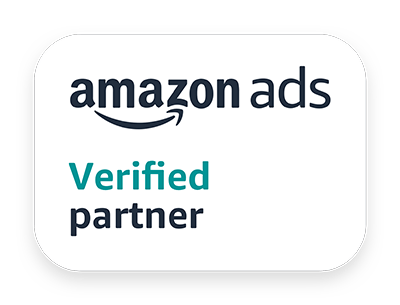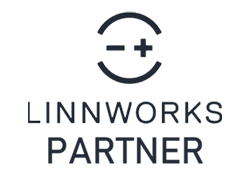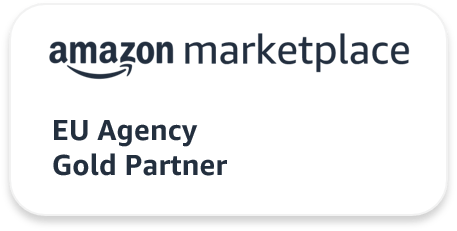How do I get on Amazon Vendor Central?
There are two methods to start selling products on Amazon Seller Central: as a seller (Amazon 3p seller) or an Amazon 1p seller, this is what is revferred to as “how to do business with amazon”
However, this is pretty much where the similarities come to an end. Amazon UK Vendor Central is distinctly different from Seller Central – so, if you have an account for one of them, they cannot be used interchangeably. Therefore, from the outset, it’s important to understand this difference between Amazon Vendor vs. Seller Central.
What is Amazon Vendor Central?
Amazon Vendor Central is eCommerce giant’s invite-only platform where businesses are invited to sell to Amazon, as opposed to ‘Amazon users’. So, essentially, you play the role of an Amazon supplier, which means:
- Amazon will send you a purchase order listing outlining what they want to purchase from you
- You will then send them the required inventory
- They pay you based on terms agreed between you and Amazon
Amazon Vendor Central UK can be a discrete and attractive way for businesses to give their products exposure on Amazon, with none of the hard work and effort which is typically required when selling directly to customers.
How to join Amazon Vendor
Registration with Amazon Vendor Central in the UK or any of the supported regions is by invitation only., however at Ecommerce intelligence we have contacts who can bring the possibility of vendor central to you, alternatively, these vendor invitations are typically sent to:
- Marketplace sellers who have been doing well selling their own line of branded products;
- Existing brand names who have generally seen a strong demand for their products;
- Exhibitors at trade fairs whom Amazon witnessed first-hand having attractive or promising products.
However, the above is not an expansive list – Amazon may send invitations to other businesses as well who meet the Amazon Vendor Compliance requirements. It’s important to stop and think for a moment: why would Amazon invite just any business to sell on their Vendor Central platforms, given that millions of similar or perhaps even better products are already available?
Simply put, new products are being conceived all the time on Amazon, in addition to many existing brands who generally have poor availability on the platform. Amazon’s vendor recruitment teams, therefore, are always on the lookout for new brands and products to sell on their platform, no matter what their country of origin, and it makes perfect sense: it’s good for business.
So how does the Amazon Vendor Central process begin? You get an email from Amazon, showing interest in selling your products. If you confirm that you’re indeed interested in becoming a vendor with them, they will explain how things work at Vendor Central, along with the respective terms of business.
These terms are generally non-negotiable and what happens is, Amazon will extend an offer, and your only options are to accept or decline. With that said, if you happen to be a fairly large, popular and influential brand, you may be able to bend some of these terms to your advantage.
Once the terms have been agreed to, Amazon will help you create an Amazon 1P seller account in Vendor Central and ask you to register. Next, you will provide your product and cost information. That’s pretty much it.
What advantages are there of selling on vendor central(1P) over seller central (3p)?
With our clients we typically find larger priced items tend to be more cost effective but it all depends on whether Amazon price accordingly.
You cannot set your own retail pricing on Vendor, Amazon will allow you to provide them with a cost price, but they may negotiate this on top of their terms they have already set out with you.
The real advantage is being able to “sell” your inventory directly to Amazon without having to hold stock and await for it to sell in drubs and drabs, this means additional costs if your using Amazons fulfilment by Amazon (FBA) service
You’re on Amazon Vendor Central UK – Now what?
Once you’re there, it’s important to know how to make use of some of the key features on the platform. These include:
Orders – Where you receive purchase orders from Amazon. Shipping information is also provided here.
Items – This is the place to update and include all relevant information about your product, including images.
Merchandising – This is where you’ll find the marketing tools for your products, such as Amazon Vine and A+ Content
Payment – You’ll be paying out invoices here and find remittances as well.
Advertising – Here, you can create and manage all your PPC campaigns and increase your product’s visibly.
Reporting – You’ll probably be keeping an eye on this area more so than others. Reporting gives you insights into your business performance in the Vendor Central marketplace. The Retail Analytics feature is very handy for this purpose.
Let’s fill those orders!
Its crucial to know that Amazon will start placing vendor orders for your items as long as it see’s that the market is searching for those items. In other word’s as long as customers are searching for your product, Amazon will create purchase orders (PO’s) for your products.
By now you understand the difference between Amazon Seller vs. Vendor, how to join Amazon Vendor Central, meet Amazon’s vendor compliance requirements and get on with business. You’re going to be undoubtedly thrilled as your first order flies in.
If you need any help at all with getting on Amazon Vendor Central or how to make the most of your privileges as an Amazon 1P seller, our specialist Amazon marketing team is ready to assist.




